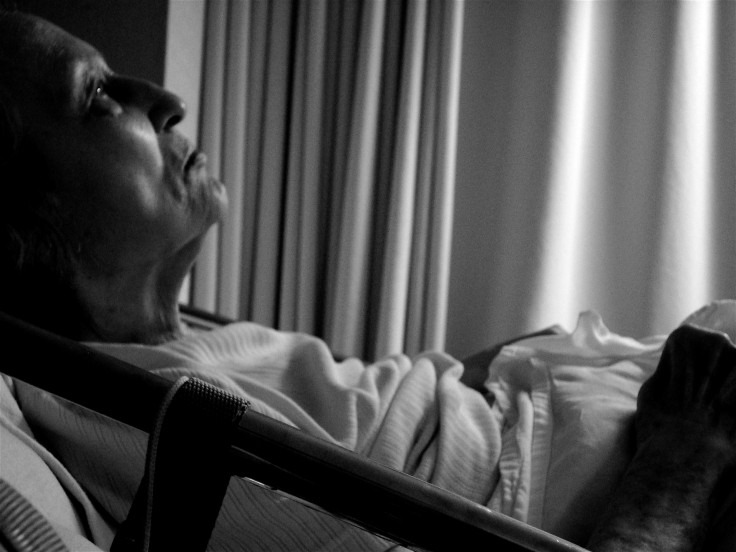Controlling Obamacare Costs: Government Seeks To Improve Healthcare Management Of 'Super-Utilizers'

Known as “super-utilizers,” a small group of American healthcare consumers accounts for a disproportionate share of the nation’s overall medical expenditures, as the healthy subsidize the sick in a massive insurance pool growing larger as Obamacare comes online.
Similar to McDonald’s loyal customer base known in fast-food parlance as “heavy users,” small groups of unhealthy and often poor Americans visit emergency rooms and spend time in hospital beds much more frequently the average person, even compared to the average person with chronic diseases and conditions. One-percent of Americans accounted for 21 percent of the $1.3 trillion spent on healthcare in 2010, costing nearly $88,000 per person.
In the United States, the distribution of health is nearly as lopsided as the distribution of wealth. A recent report from the U.S. Agency for Healthcare Research and Quality found that 5 percent of Americans account for half of all healthcare expenditures, while the low-use half the country’s population represents just 2.8 percent of the bill.
Some of healthcare’s heavy users depend upon emergency room services and hospitalization for treatment of psychological and social problems, including people struggling with alcoholism and drug abuse, homelessness, and chronic medical conditions. Although many depend on federal programs such as Medicare and Medicaid, with some qualifying for both, others raise rates for private premium payers. But nearly all of them, according to the federal government, make heavy use of expensive emergency room treatment from an inability to manage their lives independently in an attempt to leverage available resources in the fragmented and complicated U.S. healthcare system.
In Maryland, a 58-year-old woman breaks her ankle and then develops a blood clot. Following her initial treatment, she’s unable to find follow-up care to monotiro her blood-thinning drug, resulting in 30 emergency room visits over a six-month period. In Mississippi, a 55-year-old man with severe hypertension and kidney disease receives treatment while hospitalized for worsening organ failure. But once he is sent home, where his utilities have just been disconnected, he suffers in sweltering heat with no refrigerator or way to cool down. And in Michigan, a 42-year-old morbidly obese woman occupies beds in hospitals and nursing homes for lack of home healthcare options.
Such heavy users, also known as “frequent fliers” in the medical industry, typically suffer from multiple health problems, in addition to significant psychiatric, financial, and social ills. Any one “super-utilizer” may suffer from heart failure, diabetes, kidney disease, bipolar disorder, or some other combination of diseases and conditions.
With only half of U.S. states expand Medicaid programs under the Affordable Care Act, healthcare systems billing the U.S. Centers for Medicare & Medicaid Services are attempting to better manage heavy users by assigning case managers trained to identify problems that may lead to additional expenses. Sometimes, better management of patient care between emergency room visits and hospitalizations may involve lower-cost services, such as a phone call to a patient, a home visit, or even as simple as providing a scale for monitoring weight gain.
Tim McNeill, chief operating officer of Medical Mall Health Services, of Jackson, Miss., told The Washington Post on Monday that small problems quickly mushroom into large health expenses, suggesting an enormous opportunity for cost-savings with improved oversight. “We’ve seen situations where for want of a $20 cab ride to get to dialysis, a patient ended up with an emergency hospitalization costing $20,000,” he said.
While White House critics continue to deride Obamacare as a fiduciary Titanic en route to the proverbial iceberg, the federal government says it’s exerting more pressure on hospitals and insurers to contain costs, especially by focusing on the super-utilizing 1 percent. Under Obamacare, the government has increased penalties on hospitals for Medicare patients who return to the hospital within 30 days of leaving. Pinpointing the problem, a study this year from Yale University found that only a third of 400 Medicare patients received a follow-up appointment with a clinician in primary care. Furthermore, a quarter of patients were given written care instructions deemed too difficult to understand, with no plain-language translation.
Carnell Cooper, a surgeon and vice president of medical affairs for Prince George’s Hospital Center, in Cheverly, Md., says managed care remains aware of the problem and of the opportunity. Improved management of heavy users is “a huge problem for us and for the healthcare system in general,” Carnell told The Washington Post. “We are well aware from a quality perspective that we have to work on decreasing readmissions.”
Among best practices recommended by some healthcare innovators, including Eric Coleman, a geriatrician in Denver who won a “genius grant” from the MacArthur Foundation. His “Care Transitions” program holistically embraces the patient from the outset to follow-up. The program's approach considers the patient’s physical and mental wellness, but also examines that within the greater social context of socioeconomic status and community support, factors which could send a person straight back to the emergency room.



























